If you’ve had experience with Google Ads over a period of time, you might be familiar with the situation surrounding the “destination mismatch” issue. This incident led to numerous businesses facing financial losses and disruptions, with some even enduring days or even weeks of downtime.
Here’s a complete guide to understanding this frustrating issue.
What does Destination Mismatch mean in Google Ads?
In Google Ads, “Destination Mismatch” is a policy to avoid redirecting visitors to a different URL, with the aim of providing the most optimal user experience to visitors. If your ad’s Display URL suggests it will take users to YouTube, but in reality, it redirects them to Facebook, you would not be able to run your ads because of a destination mismatch violation.
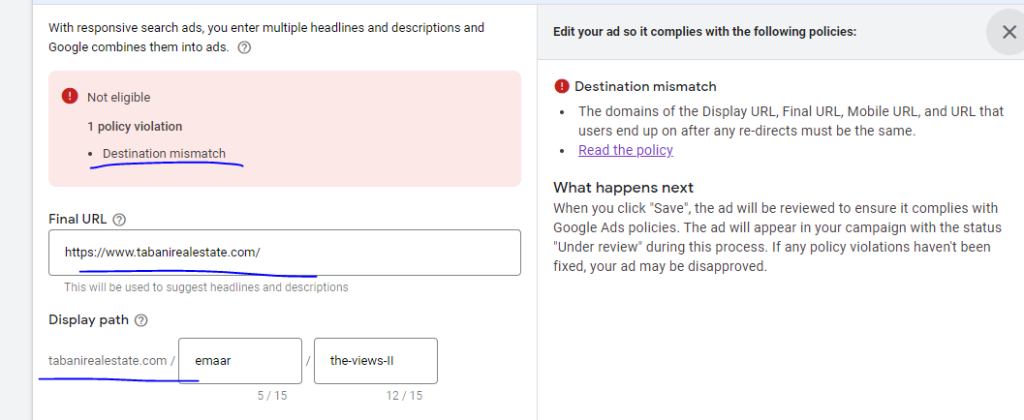
Google may disapprove of your ad if a user clicks on it and then gets directed to a different website or page, as this practice does not align with their advertising policies.
8 Reasons you get Destination Mismatch
Before resolving the issue, it’s essential to understand why Google Ads disapproved your ads or the policies we need to adhere to. While the primary cause of Google Ads flagging a destination mismatch is typically a disparity between your Final URL and Display URL, other factors could be at play.
Here are 8 potential reasons why you might consistently encounter the destination mismatch issue:
1. Destination user experience
Google requires that ad destinations should be user-friendly and secure for individuals who click on ads within the Google Ad network.
Ensure that ad destinations and their content, including pop-ups, are easy to navigate and do not include deceptive practices aimed at misleading users.
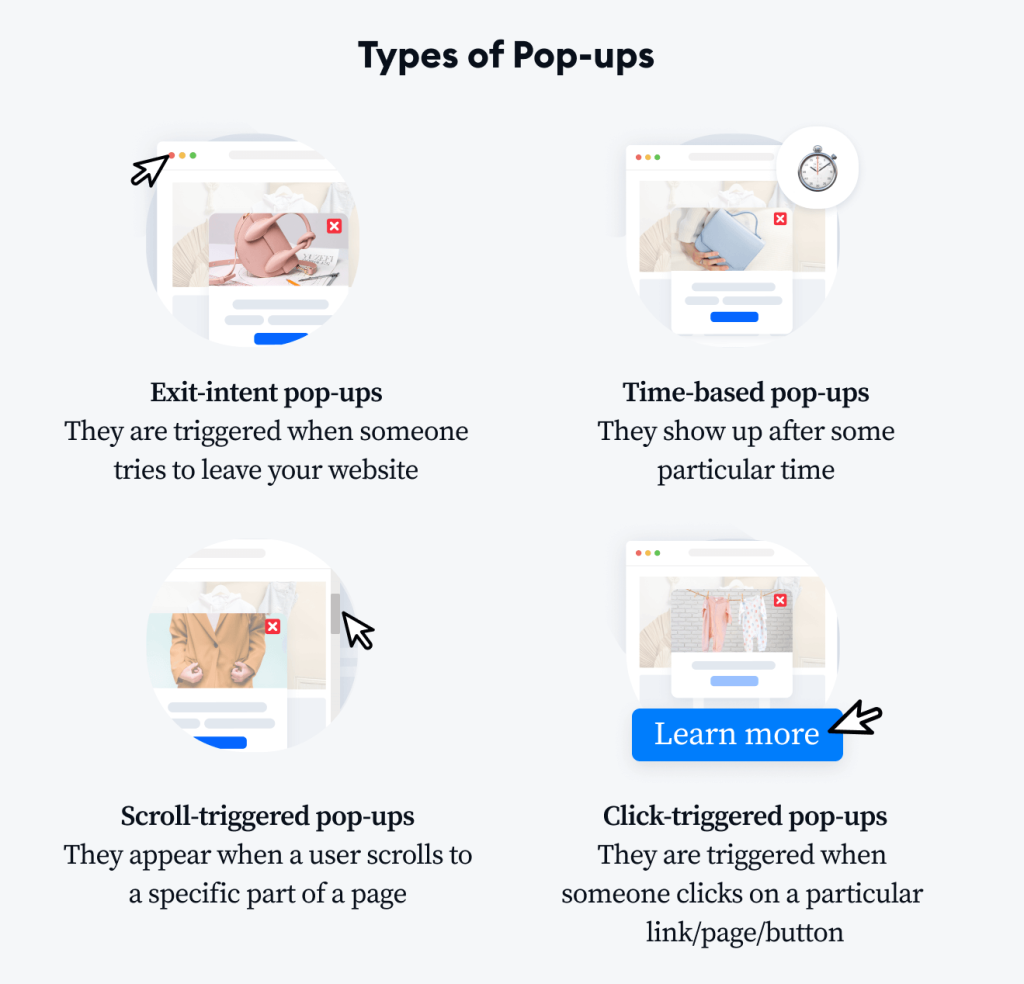
Unlike pop-ups, acceptable interstitials are graphical elements that appear within the landing page itself, without opening a new browser window, and they do not impede a user’s ability to exit a website or app.
The following situations could result in disapproval for destination experience:
- Destinations or content that are needlessly hard or annoying to navigate
- A website featuring pop-ups or interstitials that obstruct a user’s ability to access the desired content.
- A site that deactivates or disrupts a browser’s back button functionality.
- An application that necessitates downloading to access a landing page (excluding typical browser plug-ins) or doesn’t load swiftly on widely used browsers and devices.
- Links that trigger an immediate download from the ad or that direct to an email address or a file (images, audio, video, documents).
Any additional window, regardless of its content, that opens alongside the initial landing page is categorized as a pop-up:
- Appear after a set period (Timed pop-ups)
- Close automatically (Self-closing pop-ups)
- Appear at irregular intervals (Intermittent pop-ups)
- Generated directly from the ad (Pop-ups generated from the ad itself)
- Initiate downloads (Download pop-ups)
- Open beneath the main window (Pop-unders)
- Destinations that feature harmful or abusive interactions
- A website that automatically redirects the user to a different page without the user’s consent or interaction.
- A website that exhibits advertisements resembling system or site warnings and issues, potentially misleading users.
2. Destination mismatch
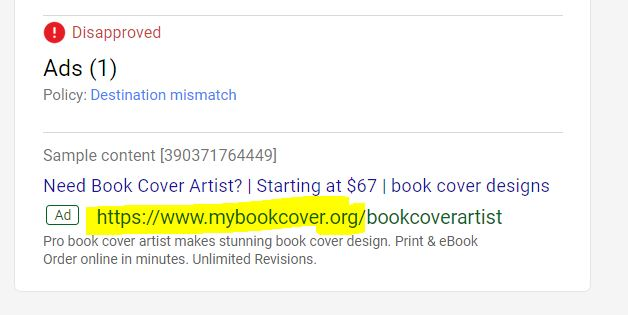
- Advertisements that do not truthfully represent where the user will be taken or directed to
- Linking to a landing page with URL “www.youtube.com” but displaying the URL as “www.google.com.”
- Including keywords as part of the top-level or second-level domain of your display URL, such as “www.[keyword].com.”
- Using a domain or domain extension in the display URL that does not match the final and mobile URLs
- Display URL: google.com and Final URL: example.com
- Display URL: example.com and Final URL: example.org
- Failing to use a subdomain to clearly distinguish a site from all other sites hosted on that domain or from the parent domain
Display URL: megadigital.com and Final URL: keyword.megadigital.com
- Implementing redirects from the final URL that take the user to a different domain
Final URL http://example.com redirects to http://example1.com.
- Using tracking templates that do not lead to the same content as the final URL
Tracking templates that guide users to particular product pages instead of leading them to a broader product category page.
3. Destination not working
Google requires that your ad’s destination and its contents must be compatible with popular browsers and devices to ensure that users are directed to a fully functional ad destination.
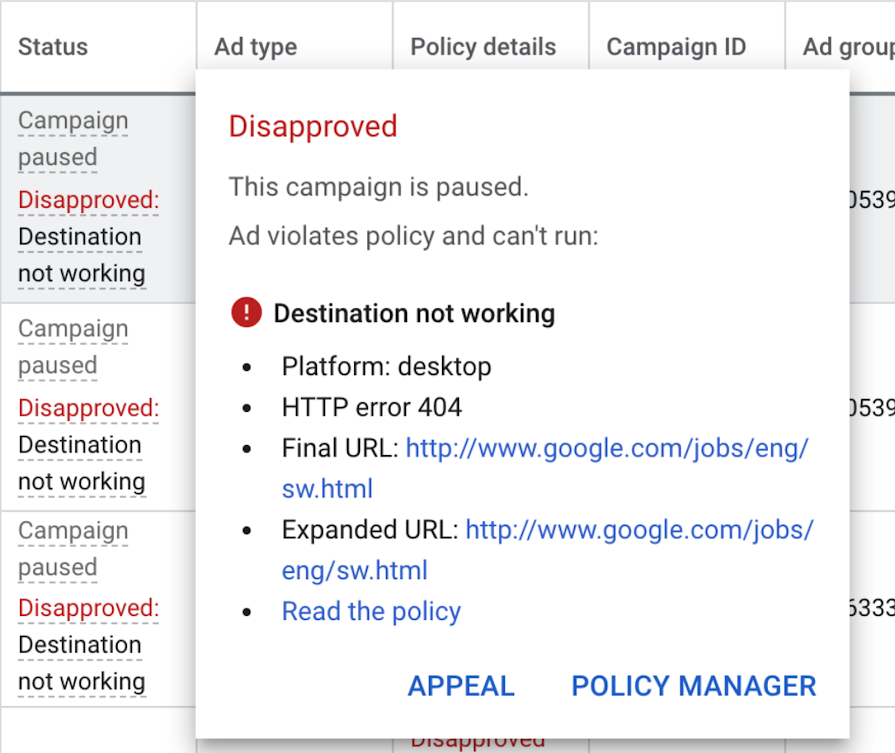
Avoid the following actions:
- Destinations that do not operate correctly or have been incorrectly configured
- Websites that return HTTP client or server issue codes.
- Authentication issues on a website.
- Websites that are incompatible with common browsers and devices, render them inaccessible.
- Destinations that are inaccessible in the targeted location
- Websites that limit access based on location (e.g., “The website is not available in your location”).
- Websites displaying messages related to access restrictions in targeted locations (e.g., “You don’t have permission to access this page”).
- Destinations that cannot be crawled by Google Ads
- Restricting access to an entire website or a substantial part of it through exclusion files (such as “robots.txt”).
- Disproportionately limiting crawl capacity in relation to the number of ads submitted.
- Destinations in violation of the policies of their app or web store are not allowed
- Chrome extensions for Program Developer
- Google Play Apps that do not comply with the store’s regulations.
4. Destination not accessible
Google mandates that ads should be reachable in the designated location.

Locations that are not reachable in the designated area would result in the disapproval of “Destination not accessible”:
- A website that presents a location-based access limitation message in the specified area (e.g., “The website is not accessible in your region”)
- A website that exhibits other messages regarding access restrictions within the specified area (e.g., “You lack permission accessing this page”).
5. Destination not crawl-able
Google mandates that your ad’s destination and its contents should be accessible to Google AdsBot web crawlers. This ensures that users are directed to an ad destination that aligns with the ad they clicked on.
Avoid the following actions:
- Destinations that cannot be crawled by Google Ads
- Preventing access to an entire website or most of it through exclusion files like “robots.txt.”
- Unfairly limiting crawl capacity in relation to the number of ads submitted.
- Destinations violate app or web store policies
This includes instances such as non-compliant Chrome Developer Program extensions or Google Play Apps that do not adhere to their respective store’s regulations.
6. Not enough unique content
Google’s goal is to provide a positive user experience when they click on an ad, which is why ad destinations must provide valuable content to users.

Mega Digital has outlined some examples (not an exhaustive list) of what to steer clear of in your ads. The following situations could result in disapproval for “not enough unique content”:
- Destination content primarily intended for displaying ads
- Using tactics like arbitrage to funnel traffic to destinations overloaded with ads.
- Insufficient or non-original content.
- Excessive advertising.
- Destination content replicated from another source without value
- Mirroring.
- Framing.
- Copying content from external sources.
- Templates or pre-generated websites with duplicate content.
- Destinations designed solely to redirect users elsewhere
- Bridge pages.
- Doorway pages.
- Gateway pages.
- Other intermediary pages used exclusively for linking to other websites.
- Destinations displaying messages indicating a lack of services
- Domains parked for future use.
- Websites reserved solely for reserving web addresses.
- Messages like “Under Construction”, “Coming Soon”, or similar.
- Incomprehensible or nonsensical destination
- Pages devoid of any meaningful content.
- Landing page content that is gibberish or does not make sense.
7. Unacceptable URL
The following situation would result in disapproval for “Unacceptable URL”:
- URLs that deviate from the standard syntax
- Using IP address as the display URL
Example: 123.456.78.90
- Display URLs that employ unacceptable characters
Example: Using symbols like &, $, %, +, or =

8. Inappropriate phone number
A situation that would result in disapproval for “Unacceptable phone number” in call-only ads, call assets, and location assets involves phone numbers that are not in service in the targeted country or are not associated with the advertised company.
- Inaccurate, inactive, irrelevant, or non-company-related numbers
- Fax numbers, vanity numbers, or premium numbers
- Premium numbers include those requiring extra fees like 1-900 numbers (US) or 871 numbers (UK).
- Vanity numbers replace digits with letters, e.g., “1-800-MNFH-411” instead of “1-800-466-4411.”
- Numbers that are not local or domestic for the targeted country.
- Virtual phone number services or personal numbering (exceptions in the UK and Spain). Numbers lacking active voicemail.
How to change Google Ads Destination URL
Pick the elements you want to modify, such as text ad final URLs, accessed via Ads > Expanded Text ads.
- Choose the specific rows you intend to edit in the data view. You can simplify your selection process by using the tree view or advanced search options to narrow down the displayed rows.
- To alter URLs, navigate to Edit > Change URLs.
- From the “Perform action in” drop-down menu, designate the URL type.
- Implement your desired modifications.
- Click the “Change URLs” button to confirm your changes.

Method to fix Destination Mismatch?
Here are some steps to resolve destination mismatch issues in Google Ads:
Manually request approval from Google
- If your Google Ads continue to face disapproval even after implementing geo-targeting, consider reaching out to Google Ads support.
- Explain your situation to them, and they may be able to manually approve your ad after reviewing your case.
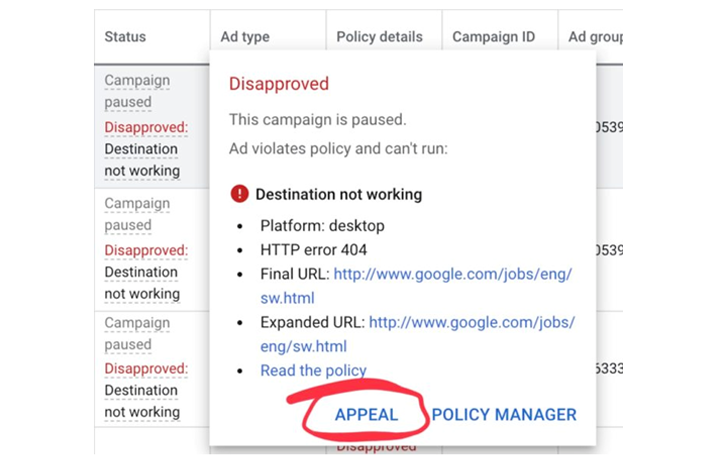
Geo-Target your Google Ads
- Use Google Ads to geo-target your visitors, similar to geo-redirecting.
- Create separate Google Ads campaigns for each redirected URL. For instance, if you’re redirecting UK traffic to a different URL, set up a distinct ad campaign specifically for the UK audience, ensuring the ad is geo-targeted accordingly.
- Exclude users from the UK from your original ad to maintain a seamless user experience and prevent unnecessary redirection.
Partner with an agency
To proactively prevent this issue, consider collaborating with a Google Partner agency like Mega Digital and leverage our Google advertising services. Our expertise can guide you in crafting effective ad campaigns while also providing valuable insights, advice, and tips. We can offer strategic guidance to enhance your advertising efforts, optimize campaigns, and help you navigate the complexities of Google Ads effectively.
If you’ve tried all methods but still can’t solve the problem, let Mega Digital assist you! As a Google Premier Partner, we have exclusive access to Google’s tools, including Looker Studio (currently the only agency in Asia with such access). With this privilege, we can monitor real-time data and industry trends, allowing us to run campaigns that deliver the highest returns while optimizing costs.
A case study: Mega Digital boosts fashion store’s Google Ads approval
Let’s look at the case study below.
Client Background:
A small fashion store, ‘Chic Closet,’ was struggling to get their Google Ads approved. They faced repeated disapprovals due to Destination Mismatch and were eager to find a solution.
Challenges:
- Persistent Destination Mismatch issues.
- Limited knowledge of Google Ads policies.

Solution:
Chic Closet sought assistance from Mega Digital, a digital marketing agency. Mega Digital implemented a strategic approach to tackle the challenges:
- Policy Compliance Audit:
Mega Digital performed an in-depth audit of Chic Closet’s ad campaigns to identify policy violations.
We discovered that the destination URLs didn’t align with the display URLs, resulting in Destination Mismatch disapprovals.
- Strategic Restructuring:
Our agency restructured Chic Closet’s ad campaigns to ensure consistent and compliant destination URLs.
We crafted tailored ad content that accurately reflected the destination, eliminating any potential mismatches.
- Education and Training:
To empower Chic Closet’s team, Mega Digital provided training on Google Ads policies and best practices.
We shared tips on maintaining policy compliance and avoiding common pitfalls.
- Manual Appeal Assistance:
In cases where disapprovals persisted, Mega Digital assisted Chic Closet in crafting persuasive manual appeals to Google Ads support.
Results:
Mega Digital’s comprehensive approach yielded impressive outcomes:
- Chic Closet’s Google Ads gained approval without further Destination Mismatch issues.
- Their ad campaigns started running smoothly, driving increased traffic to the fashion store’s website.
- Chic Closet achieved a boost in online visibility and sales, thanks to effective and compliant Google Ads campaigns.
Conclusion:
Mega Digital’s expertise and strategic interventions not only resolved Destination Mismatch challenges but also empowered Chic Closet to navigate Google Ads policies successfully. This case exemplifies how professional guidance can transform ad campaigns and drive business growth.
Prevent Destination Mismatch issues
It’s advisable to familiarize yourself with Google Ads’ policies and steer clear of the eight common causes of destination mismatch to sidestep the inconvenience of rectifying and appealing ad disapprovals. When crafting ads within an ad group, make certain that each display URL corresponds precisely to a final URL, eliminating any redirection to other websites.
By staying well-informed about Google Ads’ guidelines and evading policy infringements, you can conserve valuable time, finances, and the effort typically expended on rectifying problematic Google ads.
>>> Read more: Google Ads issues today | Common problems and solutions
Final word
In conclusion, addressing destination mismatch issues in Google Ads is crucial for a successful advertising campaign. By staying informed about policies and fine-tuning ad content, you can minimize issues and ensure a smoother journey toward your advertising goals.
Advertisers can further minimize disruption by using Google Ads Agency Accounts from a trusted Google Partner like Mega Digital for fast resolution. With this account, you can ensure smoother campaign delivery and quicker policy support.
Ready to run safer campaigns?







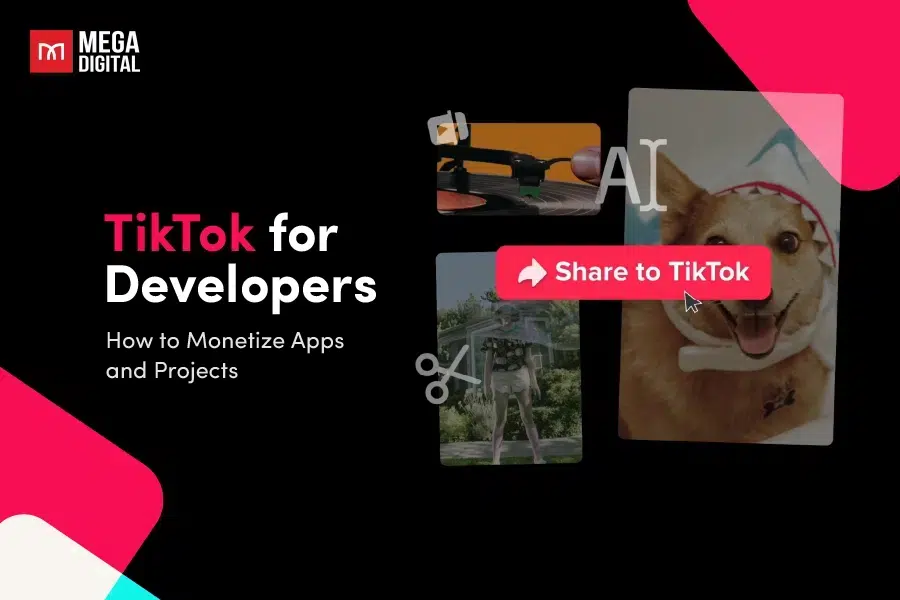
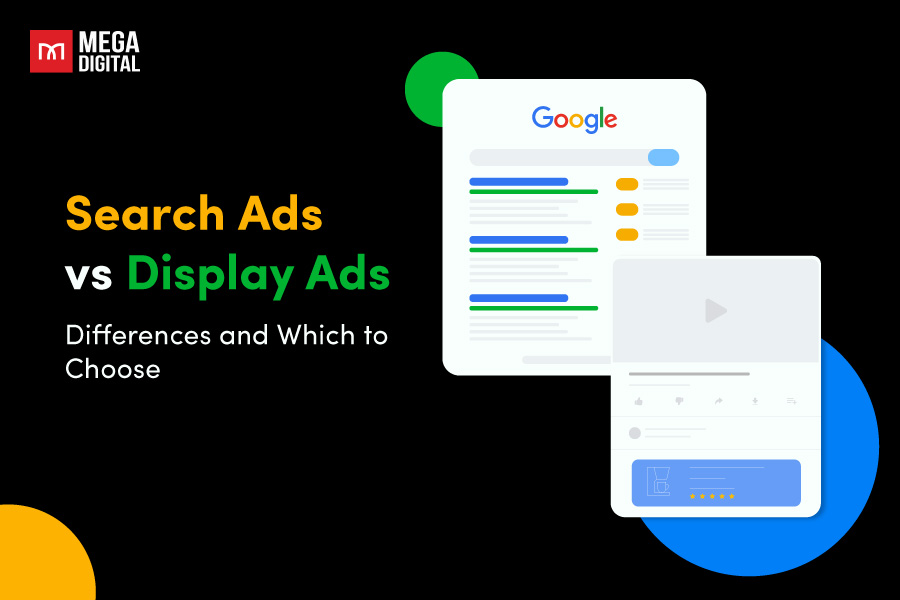
![How To Change Tiktok Username With Easy Steps [Updated 2025]](https://megadigital.ai/wp-content/uploads/2025/02/change-tiktok-username.webp)
